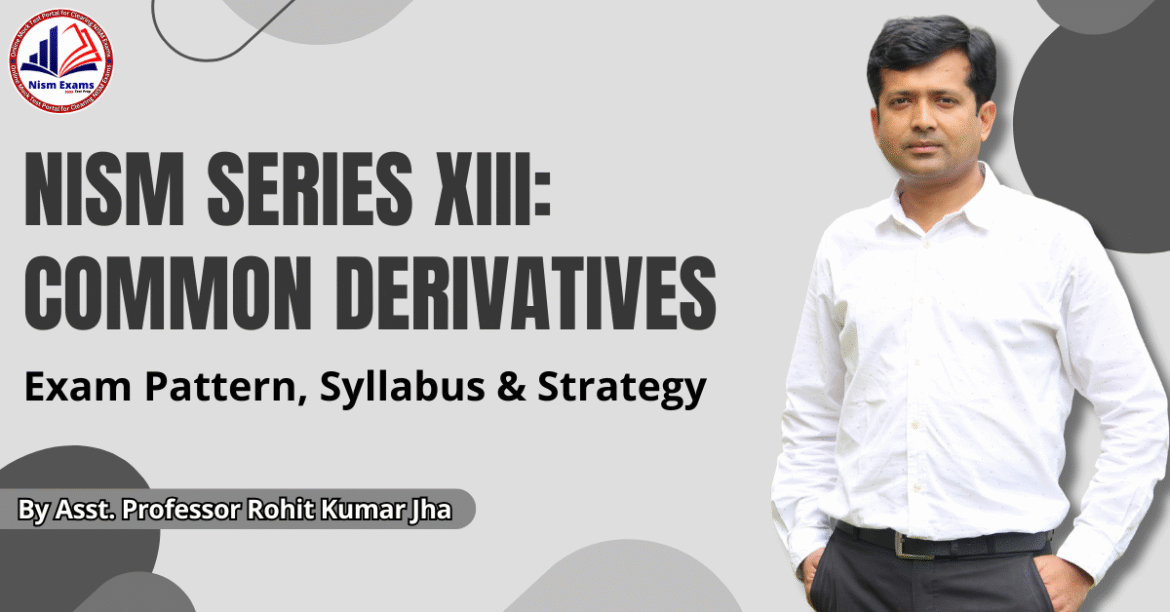In my 25 years as an educator in the financial markets, I have often encountered a common and deeply ingrained misconception. For many investors, the word “derivatives” is synonymous with high risk, complex speculation, and the kind of aggressive trading best left to the professionals. This is an unfortunate, and I believe, a limiting view. While it is true that derivatives can be used for speculation, their original and most powerful purpose is entirely different. They are, at their core, sophisticated tools for risk management and strategic portfolio enhancement.
The most successful and serious investors I know do not view derivatives as a lottery ticket. They view them as a toolkit. They understand that a well-executed derivative strategy can provide their portfolio with an insurance policy, generate an extra stream of income, or protect their international investments from currency fluctuations. This is the difference between passive investing and active, strategic wealth management.
In this guide, I want to take you beyond the textbook definitions and the sensationalist headlines. We will break down three powerful, practical, and prudent derivative strategies that are directly from the curriculum of professional certifications. My goal is to demystify these tools and show you how they can be used to solve real-world investment problems. For those aspiring to a career in this field, mastering these strategies is non-negotiable, and the preparation, often involving a quality NISM 13 Mock Test, is the key to competence.
1. Strategy #1: The Covered Call – Earning an Extra ‘Dividend’ on Your Stocks
This is one of the most popular and time-tested option strategies, and it is designed not for aggressive traders, but for conservative, long-term stock investors.
What is a Covered Call?
A covered call is an income-generation strategy. It is implemented by an investor who already owns the shares of a company and has a neutral to moderately bullish view on the stock in the short term. The strategy involves selling a call option on the stock that they already hold.
The “covered” part is key; it means your obligation to deliver the shares (if the option buyer decides to exercise it) is covered by the shares you already have in your demat account. The primary goal is to collect the premium from selling the call option, which acts like an additional, regular income stream from your stock holdings.
A Real-World Example: Mr. Singh’s HDFC Bank Holding
Let’s consider Mr. Singh, a 50-year-old professional who is a long-term investor. He holds 550 shares of HDFC Bank in his portfolio and has no plans to sell them.
- Current Situation: HDFC Bank is trading at ₹1,500.
- Mr. Singh’s View: He believes that over the next month, the stock is likely to be range-bound and will probably not cross the ₹1,600 mark.
- The Strategy: To generate some extra income, Mr. Singh decides to execute a covered call. He looks at the options chain for the next monthly expiry and sells one lot of the ₹1,600 strike price call option. The lot size for HDFC Bank is 550 shares. Let’s assume the premium he receives for selling this call option is ₹20 per share.
- The Immediate Income: By selling one lot, he immediately receives a premium of ₹11,000 (550 shares x ₹20). This money is credited to his trading account upfront.
Now, let’s see what happens on the expiry day:
- Scenario A: HDFC Bank closes at or below ₹1,600. The call option expires worthless. The buyer will not exercise their right to buy the shares at ₹1,600 when they are available for cheaper in the market.
- Mr. Singh’s Outcome: He keeps his 550 HDFC Bank shares and, most importantly, he gets to keep the entire ₹11,000 premium as his profit. He has successfully earned an extra “dividend” on his investment.
- Scenario B: HDFC Bank closes above ₹1,600 (e.g., at ₹1,620). The call option is now “in-the-money.” The buyer will exercise their right, and Mr. Singh is obligated to sell his 550 shares at the strike price of ₹1,600.
- Mr. Singh’s Outcome: He sells his shares at ₹1,600 each. He has made a capital gain from the price rise (from ₹1,500 to ₹1,600) and he also gets to keep the ₹11,000 premium. His profit is capped at the ₹1,600 level, but this was a level he was comfortable with when he initiated the strategy.
This is a powerful, conservative strategy that is a core part of the NISM syllabus. Professionals often master its nuances by practicing with a NISM XIII Model Test.
2. Strategy #2: The Protective Put – The Ultimate Insurance Policy for Your Portfolio
If the covered call is for income, the protective put is for pure, unadulterated protection. It is the financial equivalent of buying insurance for your portfolio.
What is a Protective Put?
A protective put is a hedging strategy. It is used by an investor who owns a stock or a portfolio of stocks and is worried about a potential short-term market downturn. The strategy involves buying a put option on the stock or a relevant index (like the Nifty 50).
A put option gives you the right, but not the obligation, to sell an asset at a predetermined price (the strike price). The premium you pay for this put option is your “insurance cost.” It is the maximum amount you can lose on the hedge, while your potential for profit if the market falls is substantial.
A Real-World Example: Anjali’s Pre-Election Hedging
Let’s consider Anjali, a 35-year-old salaried professional who has been diligently investing in a Nifty 50 Index Fund through SIPs for several years. Her portfolio is now worth ₹15 Lakhs.
- Current Situation: It is the month before a major general election. The market is very volatile, and Anjali is concerned that a surprise election result could cause a sharp, temporary market crash. She is a long-term investor and does not want to sell her entire portfolio.
- The Strategy: To protect her portfolio, Anjali decides to buy a protective put. The Nifty 50 is currently at 23,000. She looks at the options chain for the next monthly expiry and buys one lot of the 22,500 strike price Nifty put option. Let’s assume the premium for this put is ₹200 per point, and the lot size is 50.
- The Insurance Cost: Her total cost for this insurance is ₹10,000 (₹200 premium x 50 lot size). This is her maximum possible loss on this strategy.
Now, let’s see what happens after the election results:
- Scenario A: The market reacts negatively and crashes. The Nifty 50 falls to 21,500. Anjali’s mutual fund portfolio loses significant value. However, her 22,500 put option is now deep “in-the-money.” Its value would have surged to at least ₹1,000 per point (22,500 – 21,500). Her profit on the put option would be ₹40,000 ([₹1,000 value – ₹200 cost] x 50 lot size). This profit acts as a powerful cushion, offsetting a large part of the loss in her portfolio. Her downside was protected.
- Scenario B: The market reacts positively and rallies. The Nifty 50 surges to 24,000. Anjali’s mutual fund portfolio gains significant value. Her put option expires worthless as the market is well above the strike price.
- Anjali’s Outcome: Her loss is limited to the ₹10,000 premium she paid. She essentially paid a small, fixed insurance cost to protect herself from a potential disaster, while retaining unlimited potential to profit from the upside. This is a strategy that a NISM Common Derivative Mock Test would cover in its scenario-based questions.
3. Strategy #3: The Currency Hedge – Protecting Your US Stock Investments
With the increasing ease of international investing, many Indian investors are now diversifying their portfolios by investing in US stocks or ETFs. This is a great strategy, but it comes with a hidden risk.
The Hidden Risk in Your Global Portfolio
When you, as an Indian investor, buy a US stock like Apple, you are taking two risks:
- The Stock Risk: The risk that the price of Apple’s stock might fall.
- The Currency Risk: The risk that the Indian Rupee might appreciate against the US Dollar.
Even if Apple’s stock price goes up in dollar terms, if the Rupee strengthens significantly (e.g., the USD/INR rate falls from 83 to 80), your net returns when you convert your investment back to Rupees will be lower.
A Real-World Example: Vikram’s Nasdaq ETF Investment
Let’s consider Vikram, a tech-savvy investor who has invested $10,000 in a Nasdaq 100 ETF.
- The Situation: The Nasdaq is performing well, but Vikram is concerned about the strengthening Rupee.
- The Strategy: To isolate his investment from currency movements, Vikram decides to hedge his currency risk. He can do this by using the liquid, exchange-traded USD/INR futures on the NSE. Since he has a long position in a dollar-denominated asset, he needs to take an opposite, short position in the currency market. He sells 10 USD/INR futures contracts (as each contract is for $1,000).
- The Outcome: Now, Vikram has separated his risks. The profit or loss from his Nasdaq ETF will be determined purely by the performance of the US tech market. The profit or loss from the currency movement will be largely neutralised by his short futures position. If the Rupee strengthens, the loss on his currency translation will be offset by the profit on his futures trade. A NISM 13 Practice Test would help a professional master the calculations needed for such a hedge.
4. From Knowledge to Mastery: The Professional’s Path
The three strategies we have just discussed are powerful, practical, and prudent tools that every serious investor should understand. They are not academic theories; they are the real-world applications of derivatives for income, protection, and risk management.
Why Practical Application is Key
These strategies are also at the very heart of the NISM Series XIII curriculum. The exam is not designed to test your ability to memorise definitions; it is designed to test your ability to apply these concepts to solve problems.
These strategies are powerful tools when used correctly. Mastering their application is a core objective of the NISM XIII exam. The scenario-based questions in a NISM Series XIII: Common Derivative Certification Mock Test are specifically designed to test this practical knowledge. It is the bridge that takes you from being a student of the market to becoming a master of its strategies.
Frequently Asked Questions (FAQs)
1. Are derivatives only for high-risk speculation?
No. The article strongly argues against this misconception. It showcases three powerful strategies—the Covered Call, the Protective Put, and a Currency Hedge—that are used by conservative investors and prudent business owners for income generation, portfolio insurance, and risk management, not just for speculation.
2. What is a “Covered Call,” and who is it best suited for?
A Covered Call is an income-generation strategy where an investor who already owns shares sells a call option against them. It is best suited for a long-term investor who has a neutral to moderately bullish short-term view on their stock and wants to earn an extra, regular income (the option premium) from their holdings.
3. In the Covered Call example, what is the main trade-off for Mr. Singh?
The main trade-off for Mr. Singh is that by selling the call option, his upside potential is capped at the strike price. If the stock rallies significantly beyond the strike price, he will not participate in those extra gains because he is obligated to sell his shares at the agreed-upon price.
4. How does a “Protective Put” act like an insurance policy?
A Protective Put acts like insurance because the investor pays a small, upfront cost (the premium) to protect their portfolio against a large, unforeseen loss. The blog’s example of Anjali shows that if the market crashes, the profit from her put option will offset the loss in her portfolio. If the market rallies, her loss is limited to the premium she paid, just like an insurance premium.
5. I invest in US stocks. What is the “hidden risk” I face, according to the article?
The hidden risk for an Indian investor in US stocks is currency risk. The article explains that your final return in Rupee terms depends on both the stock’s performance and the USD/INR exchange rate. If the Indian Rupee appreciates (strengthens) against the US Dollar, it can erode the gains from your US stock investment when you convert them back to Rupees.
6. How can an investor hedge this currency risk on their US investments?
The blog explains that an investor can hedge this risk by using the liquid, exchange-traded USD/INR futures on the NSE. By taking a short position (selling futures) that is opposite to their long position in the US dollar-denominated asset, they can largely neutralise the impact of currency fluctuations on their portfolio.
7. Are these strategies difficult to implement for a retail investor?
While the concepts require a good understanding, most major stockbrokers in India now offer the platform and tools to implement these strategies. However, the article strongly implies that an investor should be well-educated on the risks and mechanics before attempting them.
8. Why is the NISM Series XIII certification relevant to learning these strategies?
The NISM XIII certification is relevant because its curriculum is not just theoretical; it is a toolkit of these exact practical strategies. It is the official, regulator-approved program for professionals who need to master the application of equity, currency, and interest rate derivatives for both trading and risk management.
9. How does a NISM 13 Model Test help in mastering these strategies?
A NISM XIII Model Test is crucial because it focuses on application. The blog explains that the scenario-based questions in a good mock test force a candidate to apply their knowledge of these strategies to practical, real-world problems, just like the examples of Mr. Singh, Anjali, and Vikram. This bridges the gap between knowing the theory and being able to use it effectively.
10. What is the key takeaway for a serious investor from this article?
The key takeaway is that derivatives are not just for speculators. They are powerful and versatile tools that can be used prudently to generate income, provide insurance, and manage risk within an investment portfolio. The article encourages serious investors to move beyond the textbook and educate themselves on the practical application of these valuable strategies.





